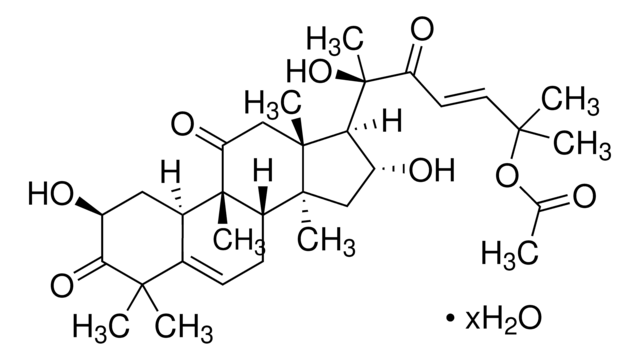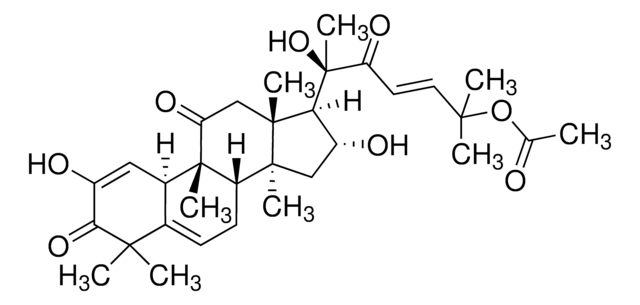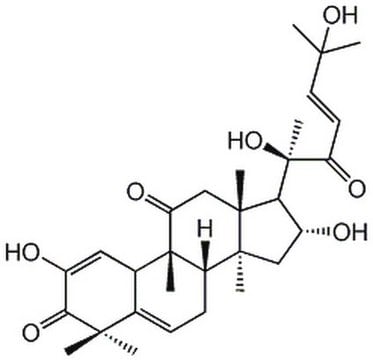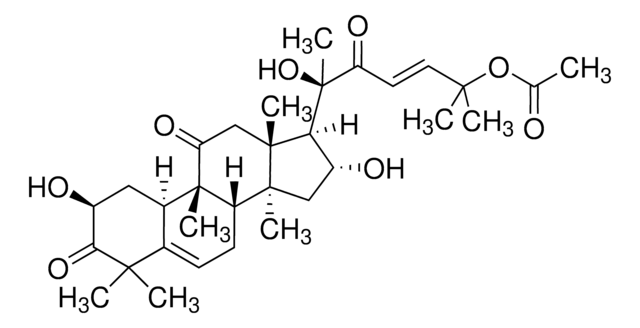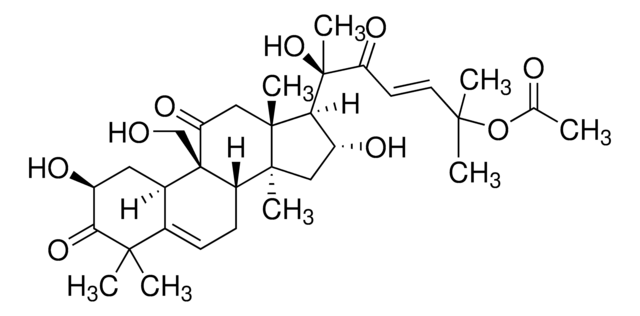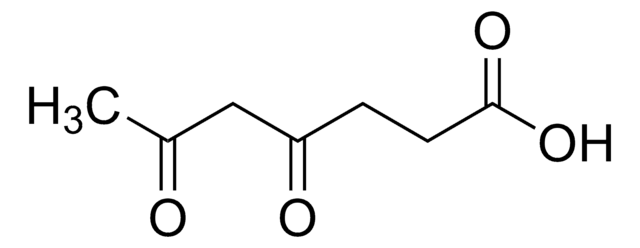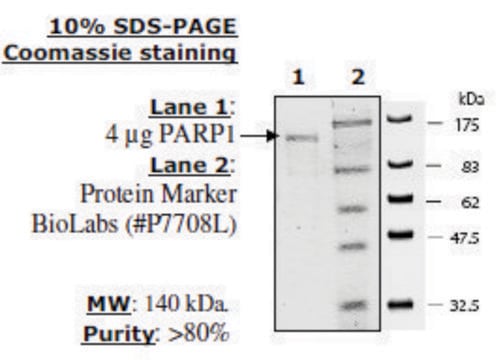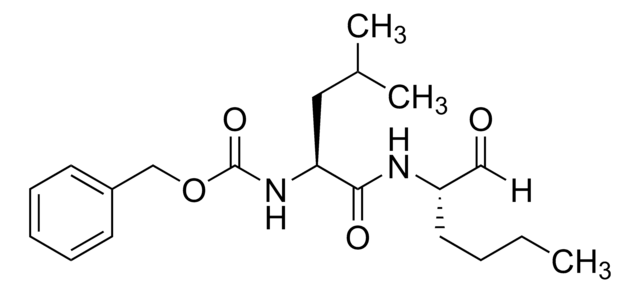추천 제품
분석
≥95% (HPLC)
양식
powder
광학 활성
[α]/D -60 to -75°, c = 0.7 (CDCl3)
색상
white to beige
solubility
DMSO: 15 mg/mL, clear
저장 온도
−20°C
InChI
1S/C32H44O8/c1-17(33)40-27(2,3)13-12-23(36)32(9,39)25-21(35)15-29(6)22-11-10-18-19(14-20(34)26(38)28(18,4)5)31(22,8)24(37)16-30(25,29)7/h10,12-14,19,21-22,25,34-35,39H,11,15-16H2,1-9H3/b13-12+/t19-,21-,22+,25+,29+,30-,31+,32+/m1/s1
InChI key
NDYMQXYDSVBNLL-MUYMLXPFSA-N
유사한 제품을 찾으십니까? 방문 제품 비교 안내
애플리케이션
생화학적/생리학적 작용
신호어
Warning
유해 및 위험 성명서
예방조치 성명서
Hazard Classifications
Acute Tox. 4 Oral
Storage Class Code
11 - Combustible Solids
WGK
WGK 3
Flash Point (°F)
Not applicable
Flash Point (°C)
Not applicable
가장 최신 버전 중 하나를 선택하세요:
시험 성적서(COA)
이미 열람한 고객
활성 필터
자사의 과학자팀은 생명 과학, 재료 과학, 화학 합성, 크로마토그래피, 분석 및 기타 많은 영역을 포함한 모든 과학 분야에 경험이 있습니다..
고객지원팀으로 연락바랍니다.